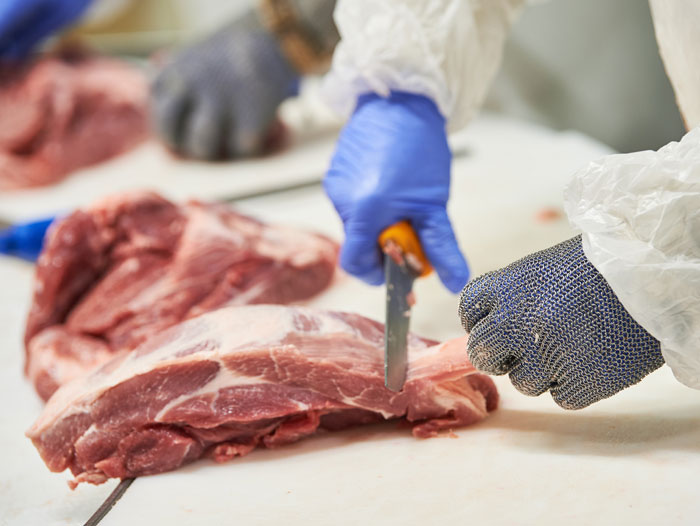Rabobank: Leadership Key for Global Meat Industry to Meet Challenges in 2022
November 24, 2021 | 4 min to read

- Animal protein firms will need to be agile to navigate another disruptive year in 2022 as input costs continue to rise
- Producers mindful of challenges posed by sustainability demands but also view them as longer-term growth driver
- Inflationary pressures threaten to squeeze margins and keep prices high, while demand will be uneven as economies reopen, sales channels rebalance and consumer preferences shift
Global meat producers face a leadership test as the disruptions affecting food markets pose challenges but also bring opportunities to drive long-term growth, according to research from Rabobank.
The findings come from Rabobank’s annual Global Animal Protein Outlook, which analyses meat and seafoods markets around the world. The specialist food and agribusiness bank says that while the disruption that has permeated sectors throughout 2021 will persist next year, progressive animal protein businesses will see the changes within the market as an opportunity for growth rather than solely as a risk.
Animal protein supply chains face four areas of cost inflation pressures in animal feed, labour, energy and freight. But Rabobank sees agile business leadership as the most likely route to sustainable growth, advising firms to embrace consumer preferences for sustainability and to be prepared for a surge in demand as economies continue to reopen and adjust following Covid-19-induced lockdowns.
On a consumer level, Rabobank expects demand for beef to remain solid, demand for salmon and shrimp to show ongoing strength, improving demand for poultry and strong sales of alternative proteins.
Justin Sherrard, global strategist for animal protein at Rabobank, said: “Traditional meat producers won’t have time to lick their wounds after a challenging 2021. Those that show agility and resilience in embracing a rapidly evolving global market will be best placed to make the most of the opportunities for growth that will be presented to them.
“This won’t be easy. Shifting consumer tastes and channels, biosecurity issues and Covid-19 disruption are hurdles meat producers need to clear. But those that show the ability to do so will emerge as the real winners in 2022.”
Recovery of pork markets in China and North America major drivers of growth
The Chinese pork market’s ongoing recovery from African Swine Fever (ASF) will be a major driver of its domestic production levels, reducing its dependence on imports from Europe, Brazil and North America. Despite a slight decline in production levels in the EU and UK, a broader increase in supply in the global market will push overall pork prices down globally, the bank expects.
Global beef production will decline marginally, reflecting changes in herd cycles in major producing regions. The strength of demand for beef in most markets, given this tightening of supply, will keep cattle and beef prices at firm levels into 2022.
Elsewhere, Rabobank expects the poultry market to recover from a mixed year which has seen high demand stimulate growth despite outbreaks of avian influenza (AI), high feed costs and labour issues. The bank forecasts global production growth of about 2 %, ranging from 1% to 5% in the major markets in 2022, as demand continues to be strong.
Demand for salmon was at record high levels in 2021 after consumers switched to at-home consumption during the pandemic, but it will be strengthened further by a recovery of the foodservice market in 2022. Despite high feed and production costs, global demand will remain strong enough for farmers to keep prices high, even though production will expand.
Justin Sherrard added: “With economies reopening it would be natural to conclude that trade will recover in tandem, but our research shows a mixed picture. The main feature of global trade will be the ongoing decline in China’s pork imports in 2022, which will exacerbate the over-supply situation in Europe. Beef trade should remain active and poultry trade should increase, pending resolution of temporary, biosecurity-related barriers. The boom in trade should come from shrimp and salmon, as exporters respond to demand recovery in many markets.”
Sustainability demands offer opportunities for growth for meat producers
Rabobank expects the focus on sustainability to increase further in 2022, as food retailers and foodservice chains actively position on this theme with consumers and regulators. Opportunities will emerge for animal protein chains that require minimal incentives to transition to more sustainable production systems.
Sustainability will also support ongoing investments in alternative protein and appeal to a growing customer base. In this dynamic market the bank forecasts increased production and new product development in 2022.
Inflation is also less of a worry for the segment, with products typically going through a more automated manufacturing process that leave them less vulnerable to labour costs.
The annual Outlook report is produced by Rabobank’s specialist team of animal protein analysts based around the world. The 2022 Outlook is the seventh edition of the animal protein outlook.
